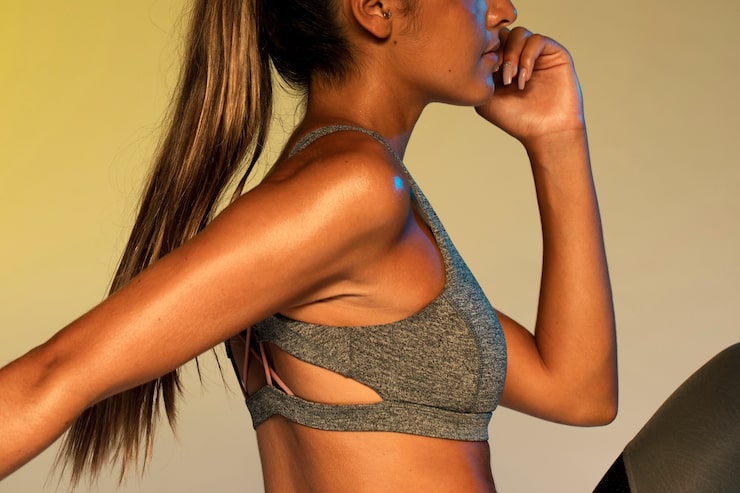Let’s be real—when you want round, strong glutes, squats are the first thing that comes to mind. They work the glutes while also strengthening your legs and core. But not all squats hit the glutes the same way. Some variations fire your glutes more, and knowing which ones to use can speed up your progress.
This guide covers the best squat variations for glutes, why they work, and useful tips on gear that can boost your results. Whether you want a firmer shape or more strength, this will help you squat smarter. Let’s go.

Quick answer: best squats for glutes
Bulgarian split squats and sumo squats are the top picks for glute activation. For even more isolation, add hip thrusts—technically not a squat, but unbeatable for glute development.
Why some squats hit your glutes better
The stance, range of motion, and how the weight is placed all change which muscles work hardest. The right squat can shift more load onto your glutes, helping shape and strengthen them.
Bulgarian split squats: single-leg powerhouse
Bulgarian split squats isolate one leg at a time, forcing your glutes to stabilize and lift. The raised back foot lets you go deeper, which boosts glute activation. This move also helps fix muscle imbalances, improves balance, and strengthens your core.
How to do it right:
– Place your back foot on a bench or sturdy surface at about knee height, with the top of the foot resting comfortably.
– Lower slowly and with control so your glutes do the work, not momentum.
– Lean slightly forward during the descent to put more emphasis on the glutes.
Why they work:
They target glutes, quads, hamstrings, and core. You can do them with bodyweight, dumbbells, or a barbell—great for home or gym workouts. Start with bodyweight to nail the form before adding weight.
Sumo squats: wide stance, big payoff
Sumo squats use a wider stance and turned-out toes to hit the glutes, inner thighs, and hamstrings more than regular squats. The wider stance can also be easier on the knees and helps open the hips, improving mobility.
How to do it right:
– Stand wider than shoulder-width with toes turned out ~30 degrees, adjusted for comfort.
– Squat to at least parallel, keeping knees tracking with toes.
– Keep your core tight and chest up.
Why they work:
Sumo squats target inner thighs (adductors) and glutes. They’re versatile—bodyweight, dumbbell, or barbell all work—and help hip mobility and stabilizer strength. Keep your chest up and shoulders back to lift heavier safely.
Front squats: posture and depth for glutes
Front squats are often seen as quad-focused, but with good depth and technique they also work the glutes. The bar in front forces an upright torso and strong core engagement. Driving through your heels and squatting deep increases glute activation.
How to do it right:
– Rest the bar on the front of your shoulders, keep elbows high and chest lifted.
– Squat to parallel or below if mobility allows.
– Push through your heels and keep your torso upright.
Why they work:
Front squats improve overall lower-body strength, build core stability, and are easier on the lower back than back squats. Start light to learn the form; goblet squats with a dumbbell are a good beginner option.
Hip thrusts: the glute king
Hip thrusts aren’t squats, but they’re the best exercise for glute isolation. They focus on horizontal hip extension, letting you fully contract the glutes at the top of the movement—perfect for strength and growth.
How to do it right:
– Sit with your upper back on a bench, barbell or dumbbells over your hips.
– Drive through your heels and lift until your body forms a straight line from shoulders to knees.
– Pause and squeeze your glutes at the top, then lower slowly.
Why they work:
Hip thrusts maximize glute activation without stressing knees or lower back. They also improve posture, explosive power, and daily movements like climbing stairs. Slow, controlled reps and a strong top squeeze are key.
Other useful variations
– Goblet squats: Great for beginners to learn posture and control while still working the glutes.
– Pulse squats: Short, controlled pulses keep tension on the glutes—perfect for finishers.
– Curtsy squats: Add a lateral component to target the side glutes (gluteus medius) and improve hip stability.
– Step-out squats: Combine side-to-side movement with a squat to hit glutes and inner thighs while boosting hip mobility.
Mixing variations keeps muscles challenged and prevents plateaus. Always prioritize good form and steady effort.
Squat gear that helps
The right equipment can make squats safer and more effective.
– Squat stand: Gives stability and confidence for heavier lifts—great for home and gym use.
– Resistance bands: Add tension at the top of squats or use them to warm up and activate glutes.
– Weightlifting belt: Supports your core during heavy sets and helps maintain posture.
– Knee sleeves: Keep knees warm and supported during deep squats.
– Squat pad: Makes barbell squats more comfortable on your shoulders and neck.
Final thoughts
Stronger, shapelier glutes come from variety, consistency, and good form—not just one type of squat. Try different squat styles, add hip thrusts, and use helpful gear to support your progress. Focus on quality reps, decent depth, and fully engaging the glutes. With time and steady work, you’ll get the results you want.